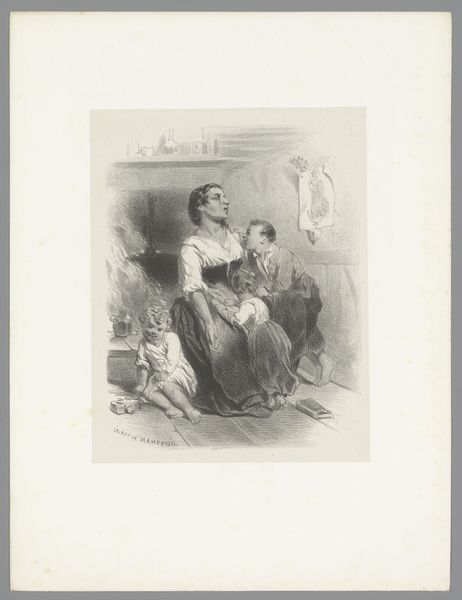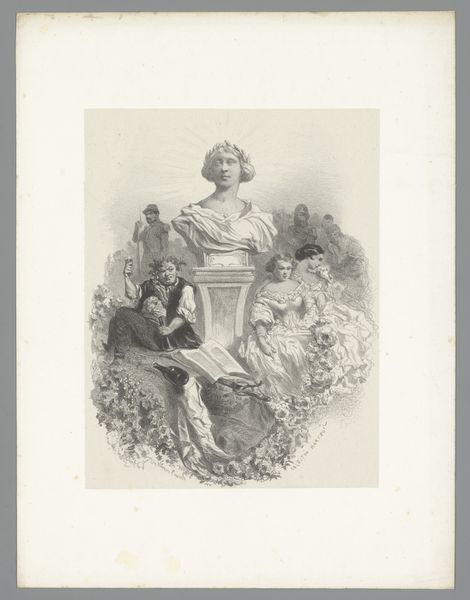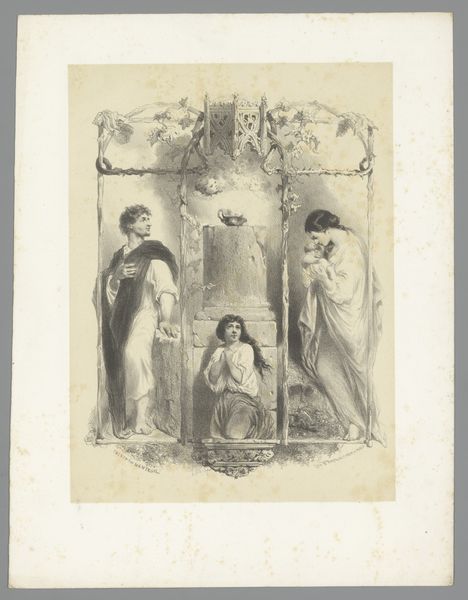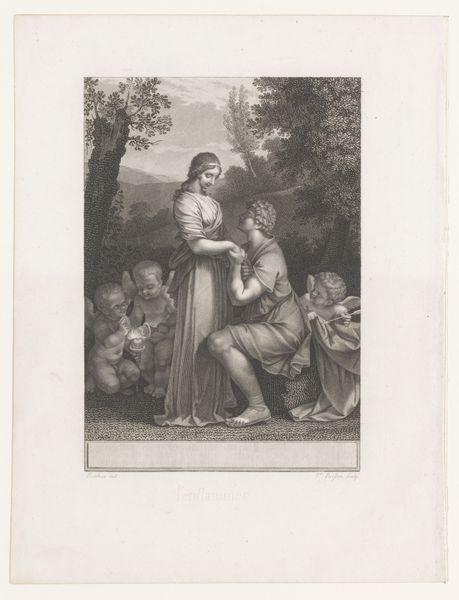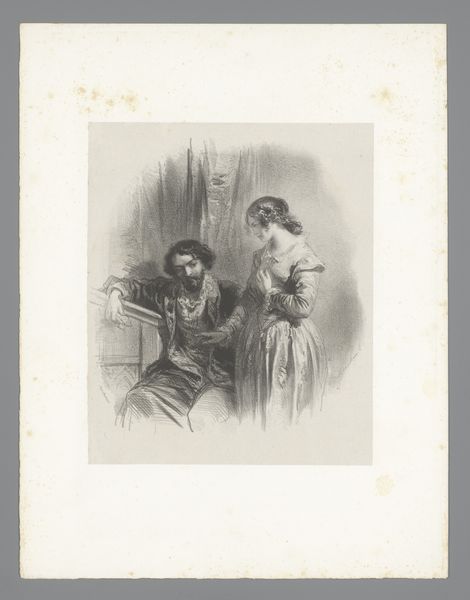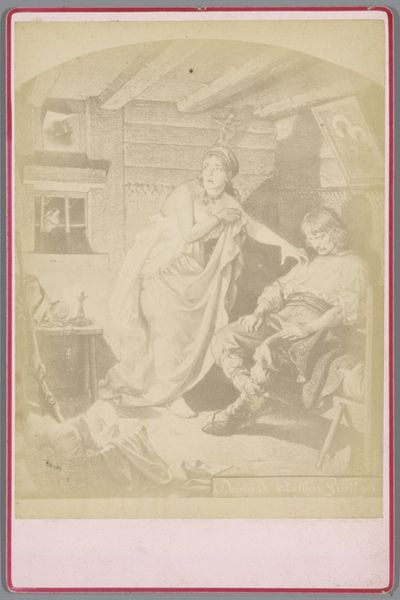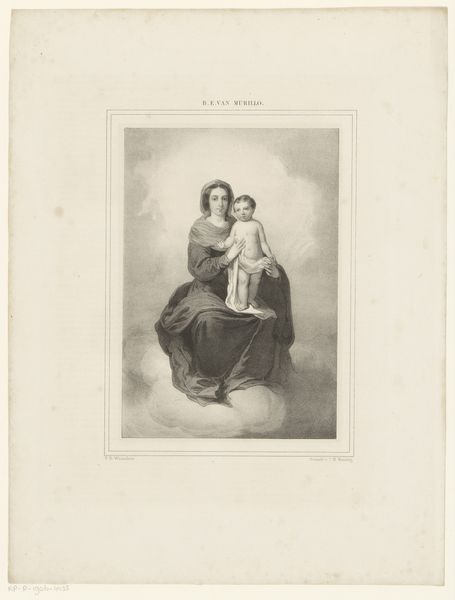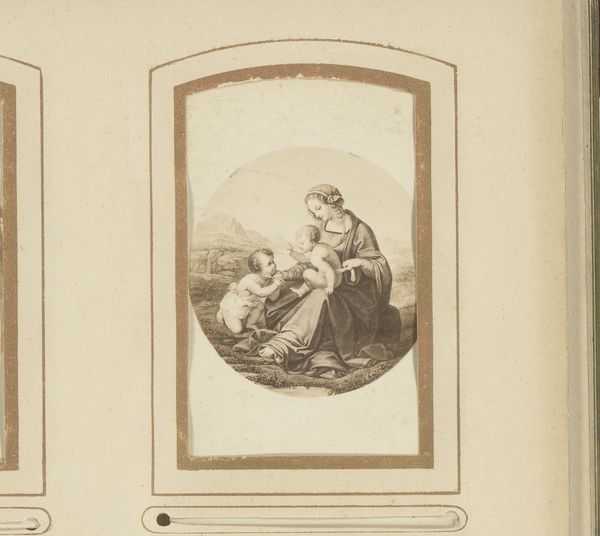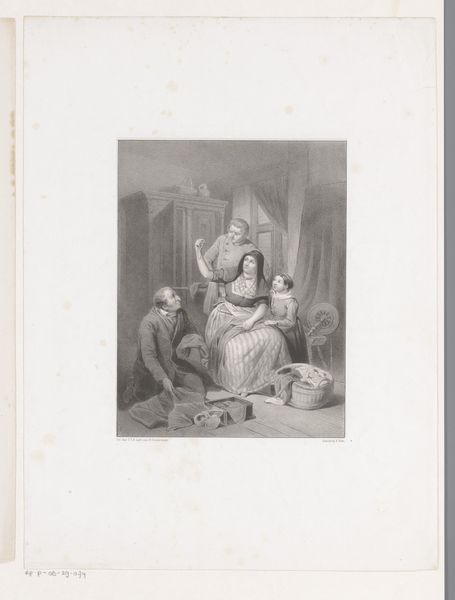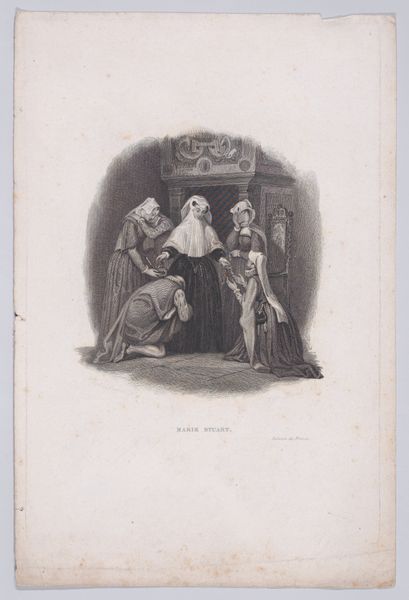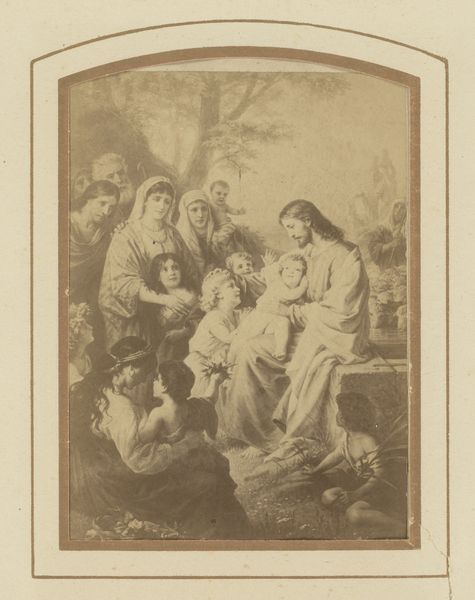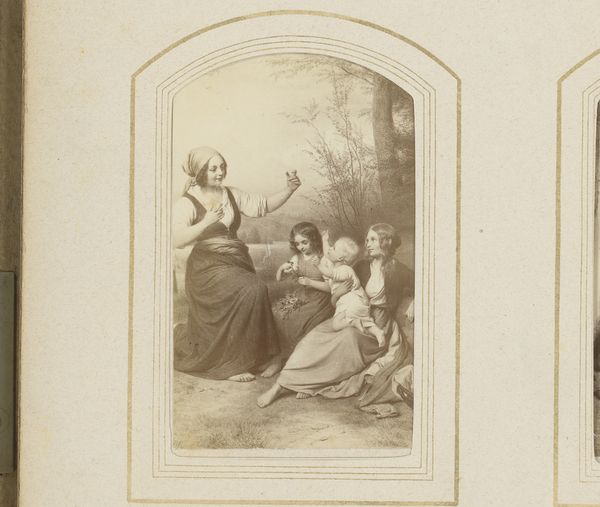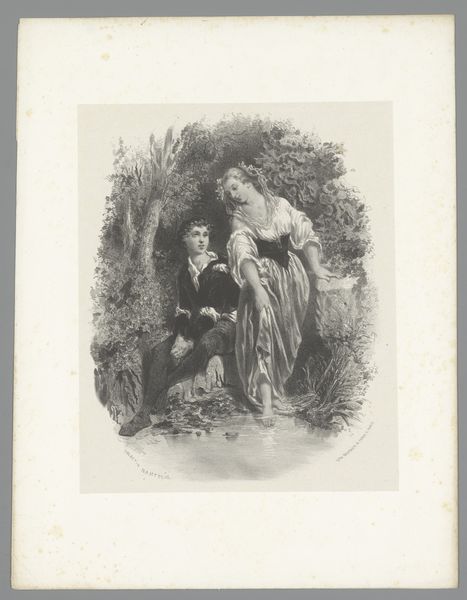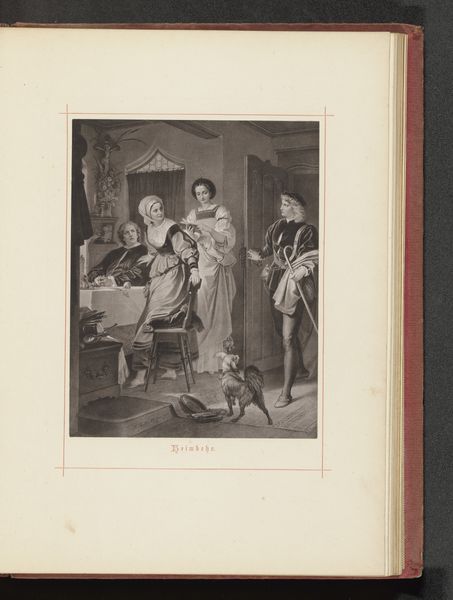
drawing, pencil
#
portrait
#
pencil drawn
#
drawing
#
allegory
#
pencil sketch
#
pencil drawing
#
pencil
#
portrait drawing
#
history-painting
#
academic-art
Dimensions: height 276 mm, width 218 mm
Copyright: Rijks Museum: Open Domain
Editor: Here we have Willem Witsen's "Vrouw in klassieke kledij zittend op een troon achter een nar," a pencil drawing from 1884, currently housed in the Rijksmuseum. It's really striking – the juxtaposition of the woman on the throne and the jester below is so dramatic. What do you see as the key elements of this composition? Curator: Indeed, the dramatic interplay is quite evident. Note how Witsen deploys chiaroscuro. The strategic deployment of light and shadow models not merely form, but the inherent relationship between the figures. Observe also how the composition leads our eye upwards, toward the enthroned woman. What might you deduce about their relative status purely through a formal analysis of their placement? Editor: I see that she's placed much higher in the frame, and the jester seems almost relegated to a supporting role. It feels like Witsen is trying to communicate their dynamic purely through position and light. Curator: Precisely. Consider the texture too. The smoothness of her drapery compared to the more actively rendered details of the jester’s garb. These formal contrasts underscore, wouldn’t you agree, a narrative tension carefully constructed through line and form alone? Editor: Yes, I'm starting to see how every element, from texture to placement, contributes to a much larger visual story beyond just representation. I'll definitely be paying more attention to these visual cues going forward. Curator: Excellent. A keen eye attuned to visual syntax is essential in appreciating the profound statements a work can convey even without relying on historical or allegorical interpretations.
Comments
No comments
Be the first to comment and join the conversation on the ultimate creative platform.
